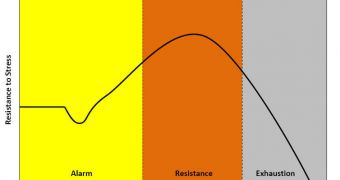In our quest for preventing aging, we may find help in the most unlikely of places. This is the conclusion of a new study conducted in the United Kingdom, which determined that stress proteins may be playing a role in preventing aging from setting in. The research was conducted on the Heat Shock Protein (HSP10), which is produced in important amounts when the human body is exposed to stress coming from the environment. This includes infections and intensive workouts, and HSP10 was found to be responsible for monitoring and coordinating the way in which other proteins interact during stressful times, PhysOrg reports.
Working in collaboration with colleagues from the University of California, researchers from the University of Liverpool determined that when mitochondria were exposed to excessive levels of HSP10, the aging process was slowed down, or even halted. The mitochondria are commonly referred to as the power plants of the cells, as they produce ATP (adenosine-triphosphate), the energy molecules all cells in living organisms use. The team found that the aging process is reduced because elevated concentrations of this stress protein prevent the useless expenditure of muscle strength.
“We studied the role of HSP10 inside mitochondria, as it is here that unstable chemicals are produced which can harm parts of the cell. The damage caused by this is thought to play an important part in the aging process, in which skeletal muscle becomes smaller and weaker and more susceptible to stress damage,” explains UL School of Clinical Sciences professor Anne McArdle. She adds that the stress protein occurs naturally in all living things, as do mitochondria, which means that the relationship between the two should hold true throughout all species.
“Our research is the first to demonstrate that age-related loss of skeletal muscle mass is not inevitable and this could have considerable implications for the future health care of the elderly. Between the ages of 50 and 70 we lose approximately 25-30% of our muscle. Falls – a major cause of injury and death in people over the age of 65 – are often the direct result of loss of mobility and weakened skeletal muscle,” the expert adds. “We now need to look at how we might artificially increase production of HSP10 in the body, specifically in relation to aging muscle, to see if the protein could be used as a therapeutic measure,” she concludes. Details of the new data appear in the latest issue of the esteemed American Journal of Physiology.

 14 DAY TRIAL //
14 DAY TRIAL //